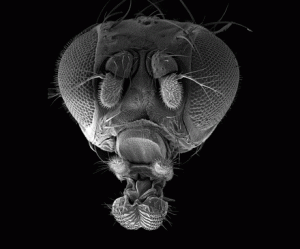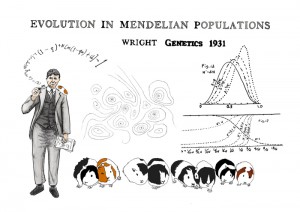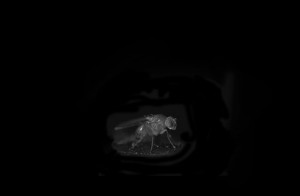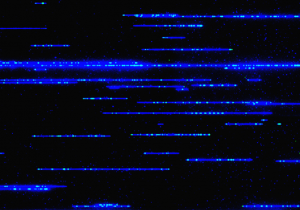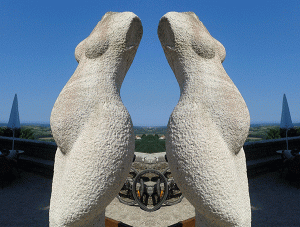Enter your address to receive notifications about new posts to your email.
Science & Publishing
-
Science & Publishing
What doesn’t kill you makes your offspring stronger
When a C. elegans nematode starves early in its life cycle, its offspring are more resistant to starvation in the next generation; however, this life-saving inheritance comes at a fitness cost for the worm itself, reveals research published in GENETICS. Jobson et al. investigate the idea that lean experiences during early development cause organisms to…
-
Science & Publishing
Dobzhansky: Bug collecting and the Modern Synthesis
In 1917, amidst the turmoil of the Russian Revolution, a bug-obsessed teenager in Kiev discovered a new species of ladybird beetle in the debris washed up on the banks of the flooding Dnieper River. The following year, he described the species in his first scientific publication. That 18-year old ladybug spotter —Theodosius Dobzhansky— would go…
-
Science & Publishing
New in G3: Dark flies, wavy flies, and stressed yeast
Check out the February issue of G3! Investigations Comparative Phylogenomics of Pathogenic and Nonpathogenic Species Emily Whiston and John W. Taylor G3 February 2016 6:235-244; Early Online November 27, 2015, doi:10.1534/g3.115.022806 Abstract | Full Text | Full Text (PDF) | Supporting Information An RNAi-Based Candidate Screen for Modifiers of the CHD1 Chromatin Remodeler and Assembly Factor…
-
Science & Publishing
Sewall Wright: Evolving Mendel
In 1931, Sewall Wright—a quiet American geneticist specializing in livestock and guinea pigs—published a GENETICS paper that changed how we study evolution. Wright’s “Evolution in Mendelian populations” was one of the founding documents of population genetics and was among the first formal frameworks to reconcile Mendel’s laws of inheritance with Darwin’s vision of natural selection.…
-
Science & Publishing
The evolution of Dark-fly
On November 11, 1954, Syuiti Mori turned out the lights on a small group of fruit flies. More than sixty years later, the descendents of those flies have adapted to life without light. These flies—a variety now known as “Dark-fly”—outcompete their light-loving cousins when they live together in constant darkness, according to research reported in…
-
Science & Publishing
Science writing internship at Genes to Genomes
Intern with Genes to Genomes! The Genetics Society of America journals, GENETICS and G3: Genes|Genomes|Genetics, seek an intern with a talent for storytelling and a strong background in genetics or a related scientific field. The intern will work closely with editorial staff to write posts for the Genes to Genomes blog and contribute to other writing,…
-
Science & Publishing
Mapping structural variants with nanochannel arrays
Short-read sequencing has fueled the acceleration of genetic research But though these next-generation methods are fast and efficient, they can’t do everything well. One important area in which short-reads fall short is detecting structural variants (SV), where chunks of the genome are deleted, inserted, repeated, inverted, or in some other way shuffled around compared to…
-
Science & Publishing
Holly (Martha) Elmore Spotlight on Undergraduate Research
Publishing research in one of the GSA Journals as an undergraduate is a significant and valuable authorship experience and we want to hear your story (even if it was published years ago!). GSA’s Spotlight on Undergraduate Research showcases GENETICS and G3: Genes|Genomes|Genetics authors who were undergraduates when contributing to their paper. Holly (Martha) Elmore PhD Candidate, Harvard University…
-
Science & Publishing
Sequencing so fast you’ll think you’re on CSI:
If you’ve ever watched a procedural crime-solving show on television, you’re sure to have seen a lab tech magically produce results from a complicated assay in mere minutes. If you’re a wet lab scientist, you’ve probably found yourself wishing that “CSI technology” were real so you didn’t have to spend your whole day running PCRs…
-
Science & Publishing
Art & Science: Interview with Alex Cagan
The January cover of GENETICS commemorates the journal’s 100th anniversary and the 1916 publication of Calvin Bridges’ proof that genes lie on chromosomes. The artwork was created by Alexander Cagan, a graduate student at the Max Planck Institute for Evolutionary Anthropology studying the genetics of domestication in rats. We spoke to Alex about the cover, his art, and his…
-
Science & Publishing
Examining gene expression in the maternal brain
Expectant mothers undergo vast physiological changes during pregnancy and in the months following the birth of their children. In humans, fat and total body water increase; plasma protein concentrations decrease; and blood volume, cardiac output, and blood flow to the kidneys increase. We know that these processes are controlled by the central nervous system. What…



